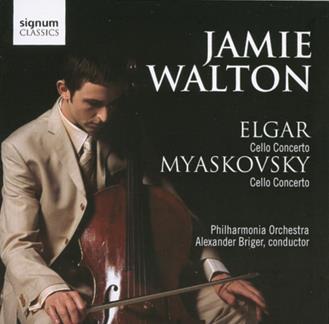
The Strad Issue: January 2008
Musicians: Jamie Walton (cello) Philharmonia Orchestra, Alexander Briger (conductor)
Composer: Elgar, Myaskovsky
Young British cellist Jamie Walton has already recorded Saint-Saens’s concertos with the Philharmonia and Alexander Briger. Now two years on he turns to two more introspective works: Elgar’s composed at the end of the First World War, Myaskovsky’s at the end of the Second.
Walton, who studied with Moncrieff and Pleeth, opens the Elgar with strident, hard-edged chords and fast and furious vibrato. His playing mellows with the music to an expressive, flowing style with just the right amount of rubato, never wallowing in sentiment. He pushes on into the second movement, with a particularly subito forte second pizzicato chord and feather-light sautillé bowing. The 1712 Guarneri he plays demonstrates its powerful tone in high tessituras during the cadenza-like Lento, and the Adagio movement feels convincingly heartfelt, even if the Appassionato is rather sudden for my taste. The changing speeds of the last movement are sensitively observed, and the hushed return of the third movement theme exquisitely controlled by both soloist and orchestra. Alas, there is one really bad moment 14 bars from the end, where Walton accelerates and Briger fails to keep up, resulting in two or three raucously messy measures.
The two-movement concerto of Nicolai Myaskovsky, a pupil of Glière and Rimsky-Korsakov, opens with portentously dark orchestral colours, out of which the solo cellist emerges in a melody of great beauty, its phrases nicely shaped by Walton’s lyrical legato playing. In the more optimistic Allegro vivace the cellist temporarily becomes the heroic figure and technical challenges of the extensive solo cadenza, ending with rising octaves, are immaculately accomplished. Balance and recording quality are both good.
JANET BANKS

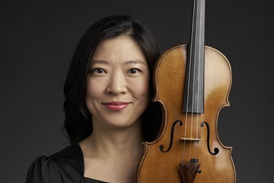
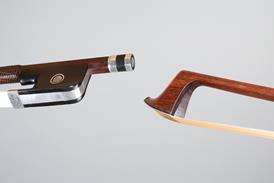
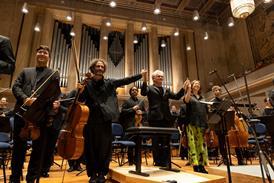
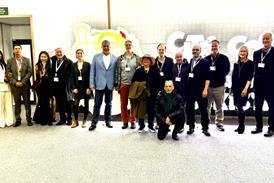



































No comments yet